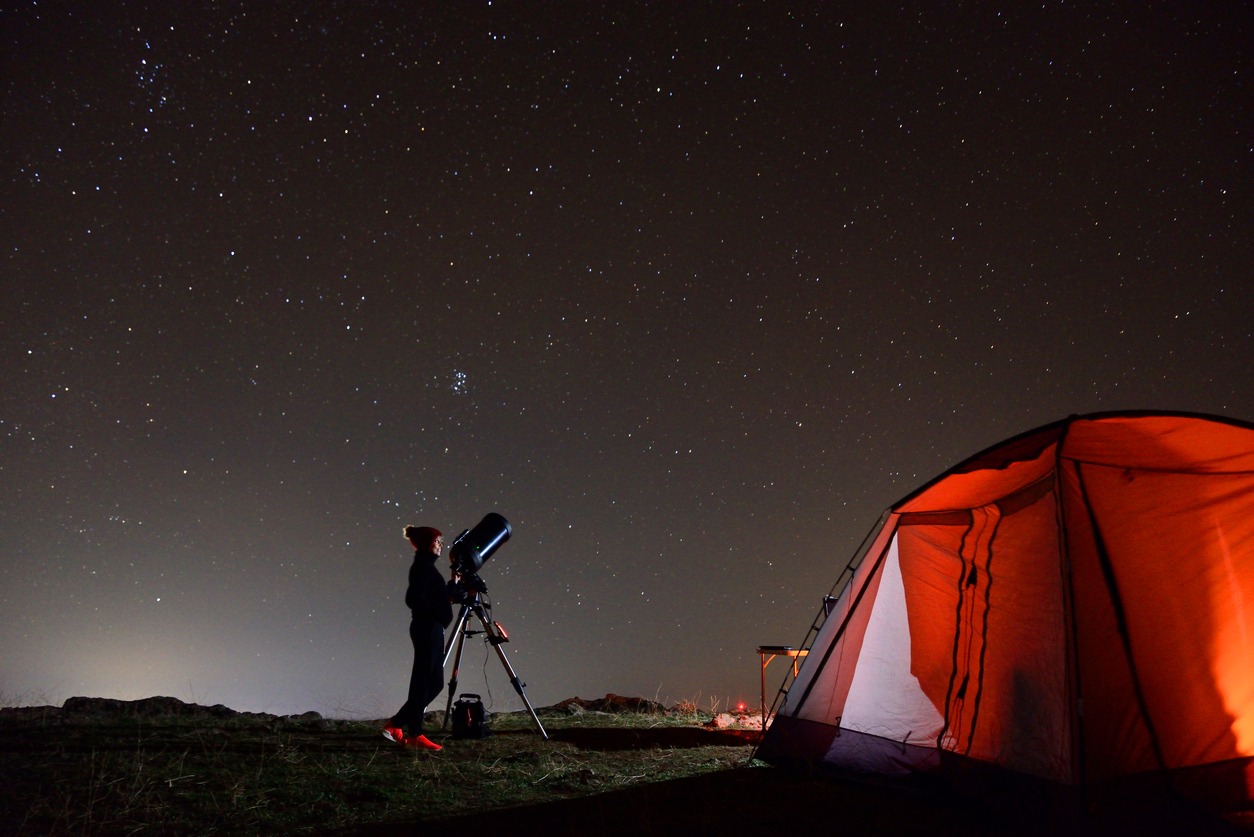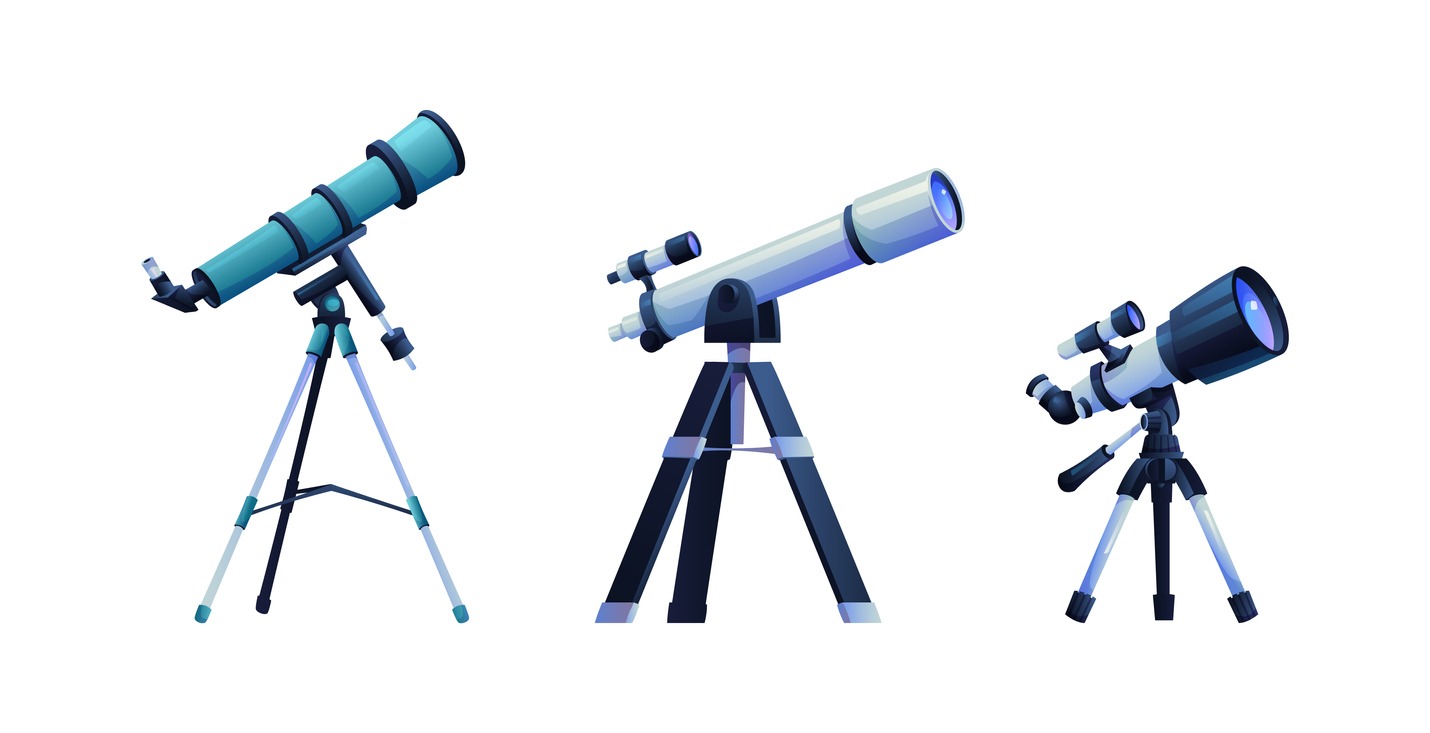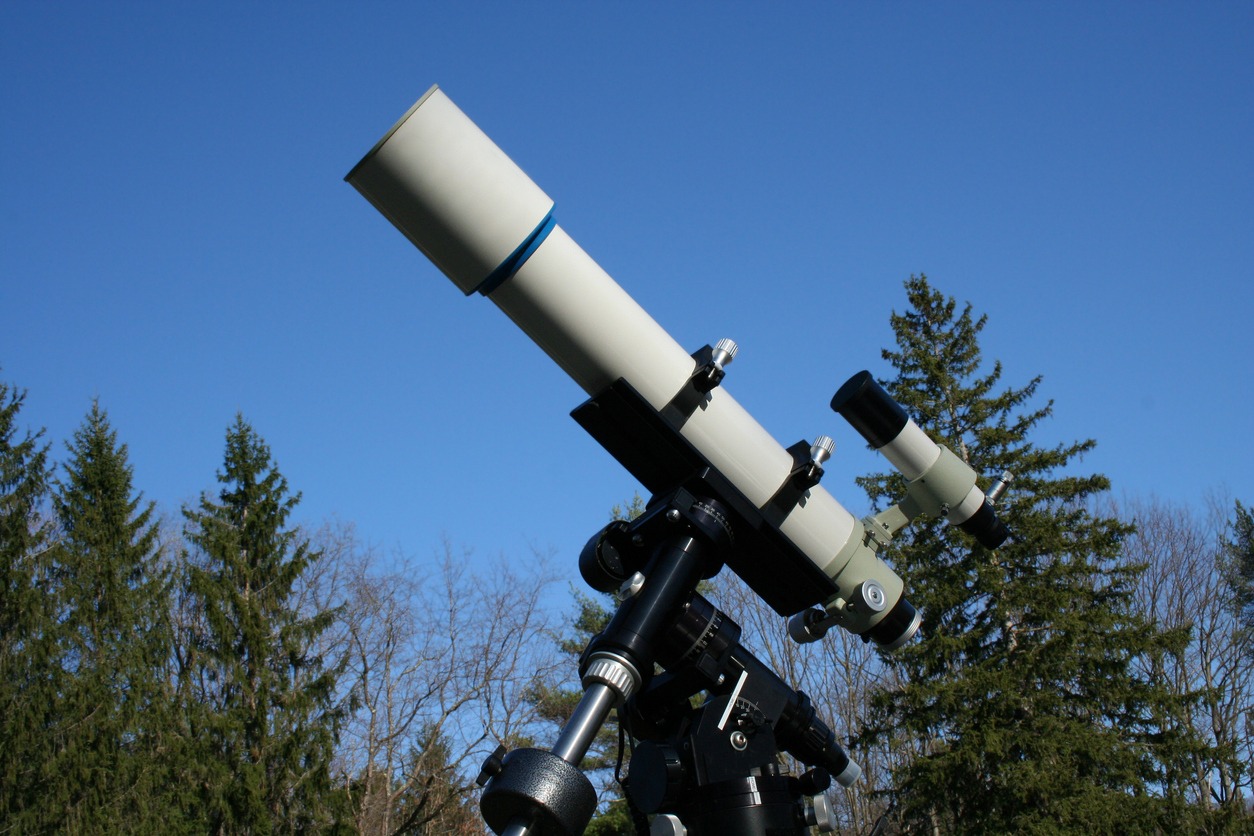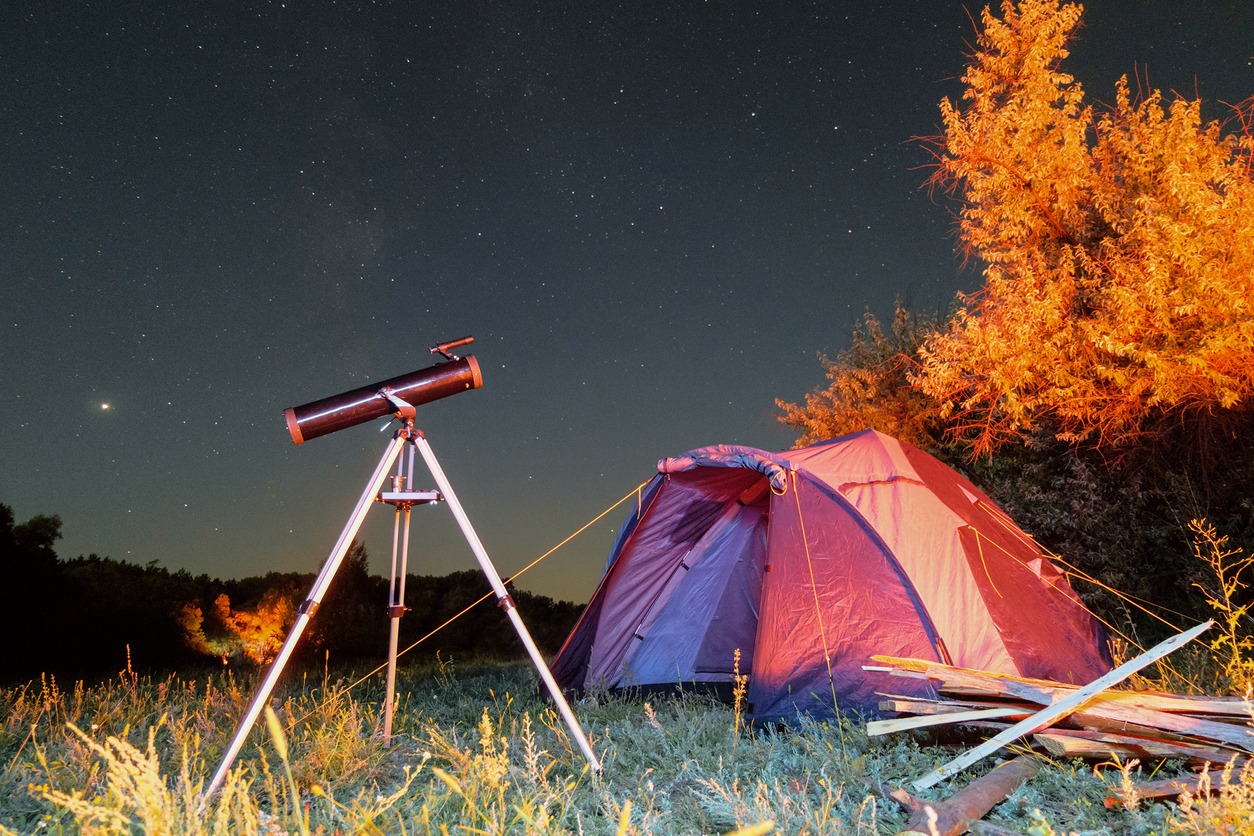Telescopes are a great way to enjoy the night skies from the comfort of home. But if you’re an outdoor enthusiast who loves to explore, a portable telescope might be the perfect tool to take your hobby along with you. A travel telescope is lightweight and portable, yet still capable of giving you an up-close look at the stars, constellations, and planets.
Traveling gives you a chance to explore the world, and to get a better view of the world around us. With the right telescope, you can expand your vision and reach into the depths of the cosmos and experience wonders beyond your wildest dreams. The good news is that the current market has many excellent options that are meant for stargazing when traveling or backpacking.
In this post you will find everything you need to know about telescopes for travel and backpacking. It will cover different types and also highlight the important aspects that any buyer should consider before spending their hard-earned money on a telescope. Have a look!
Types Of Travel Telescopes
In order to understand different types of telescopes, you have to first understand how a telescope works. A telescope is a long cylindrical tube equipped with curved lenses or mirrors that magnify far away objects so you can see them clearly. It usually consists of two or more opticals that work together to help you see far into space.
Telescopes can be classified into three main types: refractor telescopes, reflector telescopes, and catadioptric telescopes. Let’s look at all of these in a bit more detail.
Refractor Telescopes
A refractor telescope utilizes glass lenses: objective and the eyepiece. The objective lens is the main focusing unit that collects light emitted by the celestial objects and refracts (bends) it to create a clear image on the eyepiece.
The bigger an objective lens, the longer the telescope is going to be because the light rays must flow in a straight path to converge at the eyepiece lens. If they split, it will lead to color fringing or chromatic aberration. To avoid this issue, many travel telescopes employ a third lens that helps straighten all the light rays and eliminate color fringing. The double lens refractors are called ‘doublets’, while the three lens refracting telescopes are known as ‘triplets’.
Refractors are one of the most common types of telescopes available today. They are solidly built with immovable lenses that require minimal care and maintenance. Except for occasional cleaning, you won’t have to worry about keeping them maintained. Sky-Watcher is arguably one of the best brands that produce and sell refractor telescopes. To know more about this particular brand, check out The Guide to Sky-watcher Telescopes.
Advantages of Refractor Telescopes
- Good quality refractor telescopes are more reliable than other telescope types at the same price point
- Once aligned, it doesn’t go out of alignment that easily. However, different factors can still affect it including mechanical stress, temperature changes and vibrations.
- They have a sealed tube which protects internal glass surfaces from dust and other atmospheric elements.
- They produce crisp, high contrast images.
Reflector Telescopes
Reflector telescopes use a pair of mirrors to reflect the light emitted by the object after it has traveled down the tube. They consist of a dish-shaped primary mirror located at the end of the tube, facing inside. It collects the light emitted by the object and reflects it onto the secondary mirror placed near the top of the tube. The secondary mirror then reflects the light into the eyepiece creating the image that you can see. A brand that produces some of the best reflector telescopes is Carson. To know more about this brand, you can read The Guide to Carson Telescopes.
One big downside of reflecting telescopes is that the image they produce is upside down by default. Plus, you also have to be particular about their maintenance because this telescope type can quickly lose its alignment with one wrong move.
Advantages of Reflector Telescopes
- Reflector telescopes are less prone to chromatic aberration than refractor telescopes (Chromatic aberration refers to a rainbow-like effect around the object that is being viewed)
- Since mirrors are easier and cheaper to manufacture, reflecting telescopes tend to cost less.
- Reflector telescopes tend to have a wider field of view (depending on the specific design and the type of eyepiece used)
- These telescopes are shorter and generally more compact, making them more suitable for traveling and backpacking than refractor telescopes
Catadioptric Telescopes
This type of telescope employs both mirrors and lenses into its design for maximum optical benefits. A catadioptric telescope consists of a correcting lens, a primary mirror, and a secondary mirror. The correcting lens first collects the light radiated by the celestial body and folds it to follow a straight path. The straight light rays first reflect off the primary mirror, which magnifies it internally, then bounce off the secondary mirror to create an image on the eyepiece.
Unlike the other two types of telescopes, catadioptric telescopes have a body wider than its length, which makes them very portable. Their large aperture enables them to produce clear images without extra tube length.
Advantages of Catadioptric Telescopes
- Catadioptric telescopes are very portable making them the most suitable option for travel and backpacking.
- They feature sealed tubes that keep dust and other pollutants out.
- These telescopes need minimal optical collimation, i.e. aligning all components to bring objects into focus.
- They are small in size and very portable.
- They are durable and well-made with high-quality models going on for years.
Although they have many advantages over refractor and reflector telescopes and a good option for travelers and backpackers, Catadioptric telescopes are more expensive (when comparing similar aperture and quality). In the end, it all comes down to specific design, size and individual needs.
Things To Consider When Buying A Compact Telescope
Choosing a telescope for travel can be daunting at first, but by carefully considering each of the product features in this guide, you can narrow down your choices and end up with the perfect telescope for your needs and budget.
Focal Length
The focal length of the telescope is important for determining the magnification level of the view through the eyepiece. Telescopes with longer focal lengths are able to magnify images more clearly than those with shorter focal lengths. However, longer focal lengths also tend to require larger mounting solutions which may not be as conducive to travel. When making your selection, compare the focal lengths offered by different brands and models. Consider what object you want to view and how far away they are. For reference,
Eyepiece
A quality eyepiece is essential to any telescope setup, as it is responsible for magnifying the image of the object being viewed. Eyepieces come in different sizes and configurations, so you should consider what type of eye-piece works best with your telescope and any additional objective lenses you may need
Many telescopes come with interchangeable eyepieces which allow you to adjust the magnification level depending on your specific needs. When selecting an eye piece for travel use, look for ones that are lightweight and easy to transport.
Budget
Choose a telescope that is within your budget, but also make sure that it offers quality optics and good performance. More features and a larger telescope often equate to a higher price tag. Additionally, specialized components such as lenses may increase costs significantly. It is also important to factor in any additional accessories that may be necessary for your viewing experience such as objective lenses, tripods or other mounting solutions, etc.
When assessing your options, make sure that you understand the total cost before purchasing anything. Research different brands and models to find one that best fits your budget while still providing all the features you need.
With things like specifications and features being equal, Reflector telescopes tend to be the most affordable followed by refractor and Catadioptric telescopes. A small telescope can cost a few hundred dollars, while large ones can cost several thousand dollars. Fortunately, there are many brands out there that produce budget-friendly telescopes, and one of these brands is Barska. Check out The Guide to Barska Telescopes to know more about this particular brand.
Weight
When traveling with a telescope, weight can be a major factor. Look for lightweight models that can easily be taken along on hikes or trips but still provide quality viewing experiences. Small reflector telescopes are generally lighter and more portable than the same sized catadioptric telescopes.
Although heavier telescopes may provide better image quality, they can be difficult to manage while on the go. Look for a telescope that has a reasonable weight yet offers superior optics so that you won’t have to sacrifice overall quality.
Compactness
Compactness is another important factor to consider when it comes to transporting a telescope while traveling. Look for models that conveniently fold down so that they can fit into backpacks or suitcases easily. Telescopes come in various sizes and shapes so you might want to consider getting one that is both lightweight and foldable, making it possible to store them even if space is limited. Since both reflector and refractor telescopes have a curved, large mirror, they cannot be folded. Some types of Catadioptric telescopes such as the Schmidt-Cassegrain and the Maksutov-Cassegrain can be folded down for easier storage and carriage.
Besides telescopes, there are also other items that you need to fit in your bag for backpacking. For those that are backpacking in Southeast Asia soon, check out the Guide to Dressing for Backpacking in Southeast Asia to get more information on what clothes to bring in the said region.
Durability
A durable telescope will be able to withstand long-distance travels or harsh weather conditions without much damage or loss of functionality. Look for robust products with thick lenses and durable construction materials. Aluminum or carbon fiber offer superior strength without adding too much weight or bulkiness.
Some telescopes even have special coating, which helps protect them from scratches or damage. Also consider any anti-corrosives or waterproof features that help protect your telescope from extreme weather conditions or heavy usage during long trips away from home.
Image Quality
The image quality of your telescope will greatly depend on the quality of glass used in its lenses. It directly impacts how clear of an image you will be able to see through the eyepiece or camera lens attachment. Quality optics are critical here as they provide superior light gathering capabilities which result in sharper images. Consider any special coatings used on lenses such as multi-layer coatings that reduce glare or obstruction while still maintaining crisp views of far off objects in space.
High-end optically coated lenses offer superior image resolution and contrast compared to cheaper non-coated glass offerings. Many modern telescopes now offer digital enhancements like adjusting the focus manually or automatically. These features will help ensure that you get the best view possible out of your equipment.
Accessories
Telescopes often come with various accessories such as finder scopes, tripods or mountings, filters, cases, etc.. These can help improve your viewing experience as well as protect your equipment from harsh conditions during transport or storage away from home. Review what comes with the telescope you are considering to ensure you get all the necessary elements you need.
If you plan on using your telescope frequently while traveling, then it is important to invest in quality accessories that can hold up against potential wear and tear over time. Their cost should also be taken into account when budgeting for a travel telescope. There are many brands that offer accessories that can be used for their telescopes and even from telescopes made by other brands. One of the brands that produce telescope accessories is Gskyer, and if you want to know more about this brand, check out The Guide to Gskyer Telescopes.
Warranty and Support
It’s important not just to understand what products are included with each telescope, but also learn how the manufacturer is backing it up. Check what kind of warranties come with the product and what type of customer support is available in case there are any technical or quality issues. Many companies offer extended warranties or free repairs if needed. Give these a thorough consideration before committing to a purchase even if their price seems a bit higher.
Conclusion
Getting a large telescope certainly makes sense when you are buying one for your home use. But when buying one for traveling or backpacking, you have to settle for a portable model that is durable enough to meet the demands of the trip. Choosing a refractor or catadioptric telescope makes more sense as they offer maximum protection against atmospheric elements with their sealed design.
You also have to factor in features such as image quality, weight, durability, etc., that we have mentioned above. By taking all of these factors into consideration, you’ll be able to find a travel telescope that fits within your budget, yet still provides decent image quality and performance no matter where you go. If you want to have a much easier time figuring out a suitable type of telescopes for you, take a look at our Guide to Picking a Telescope.





